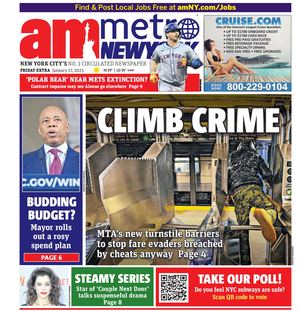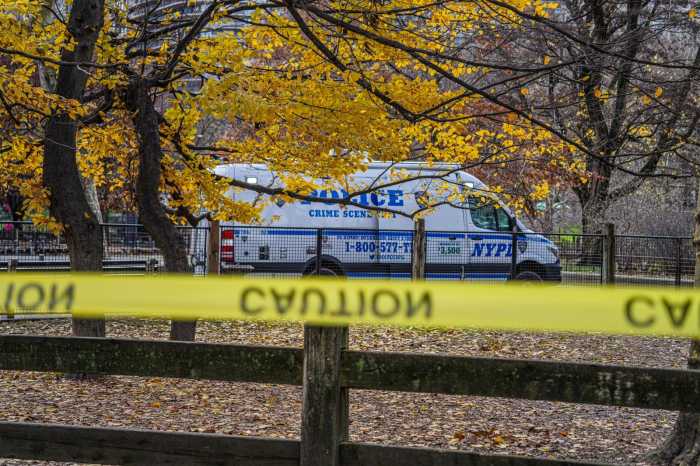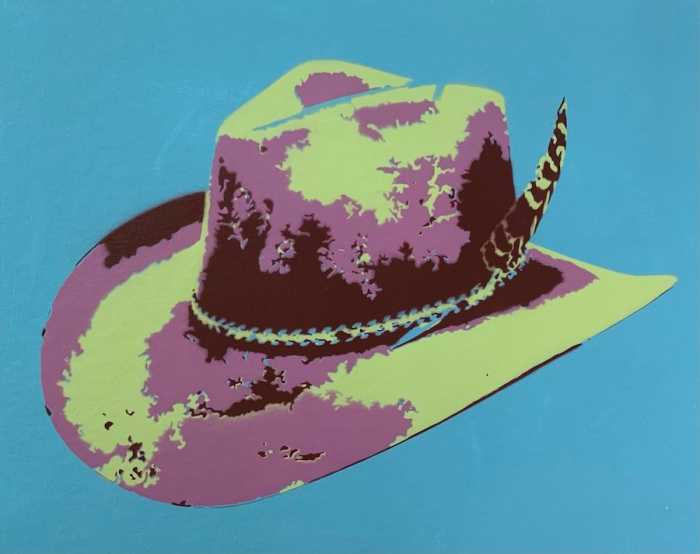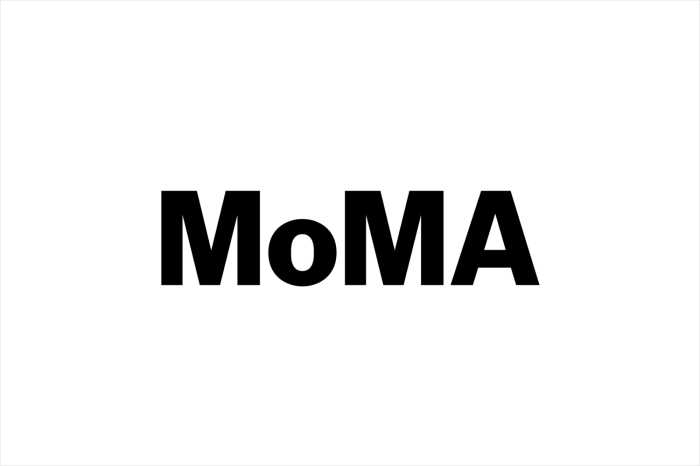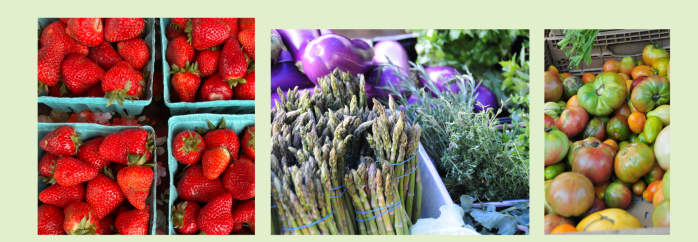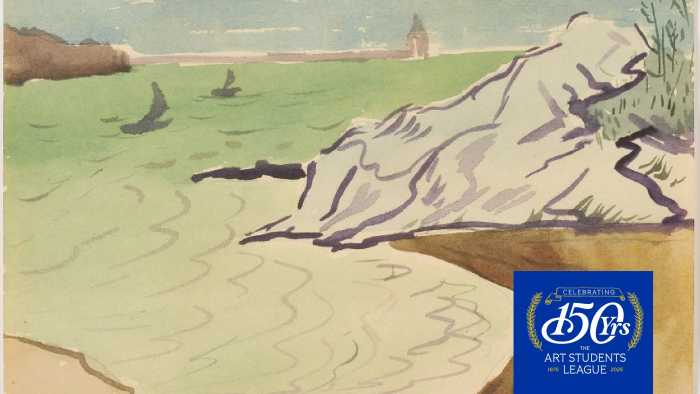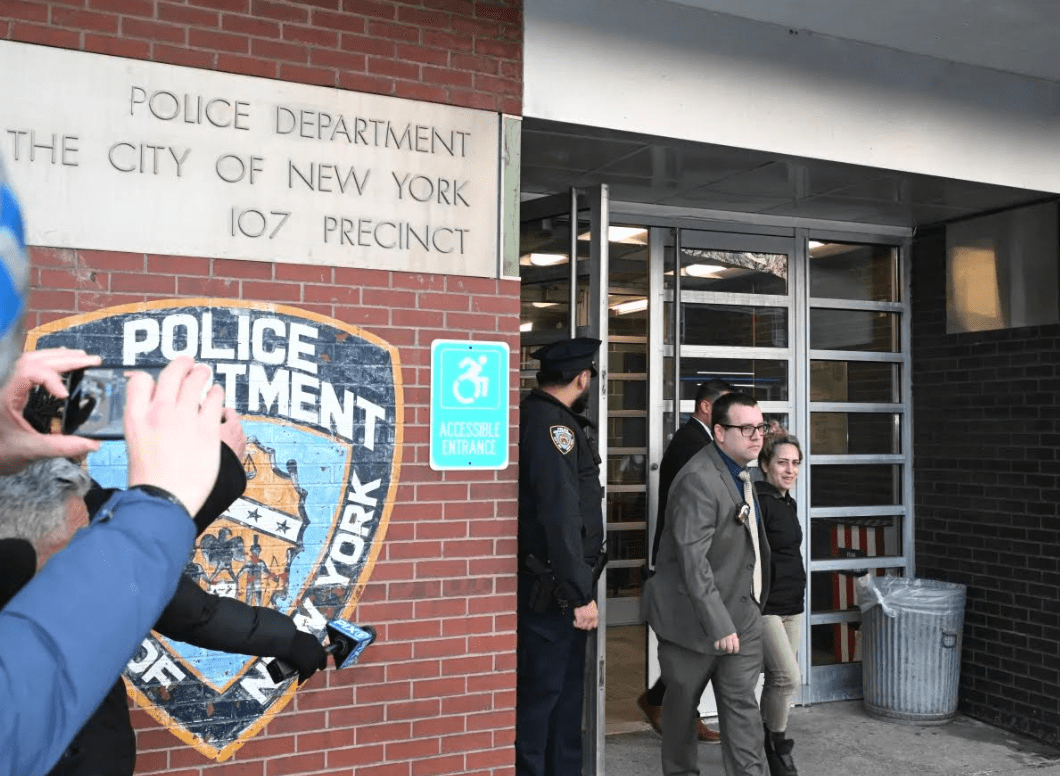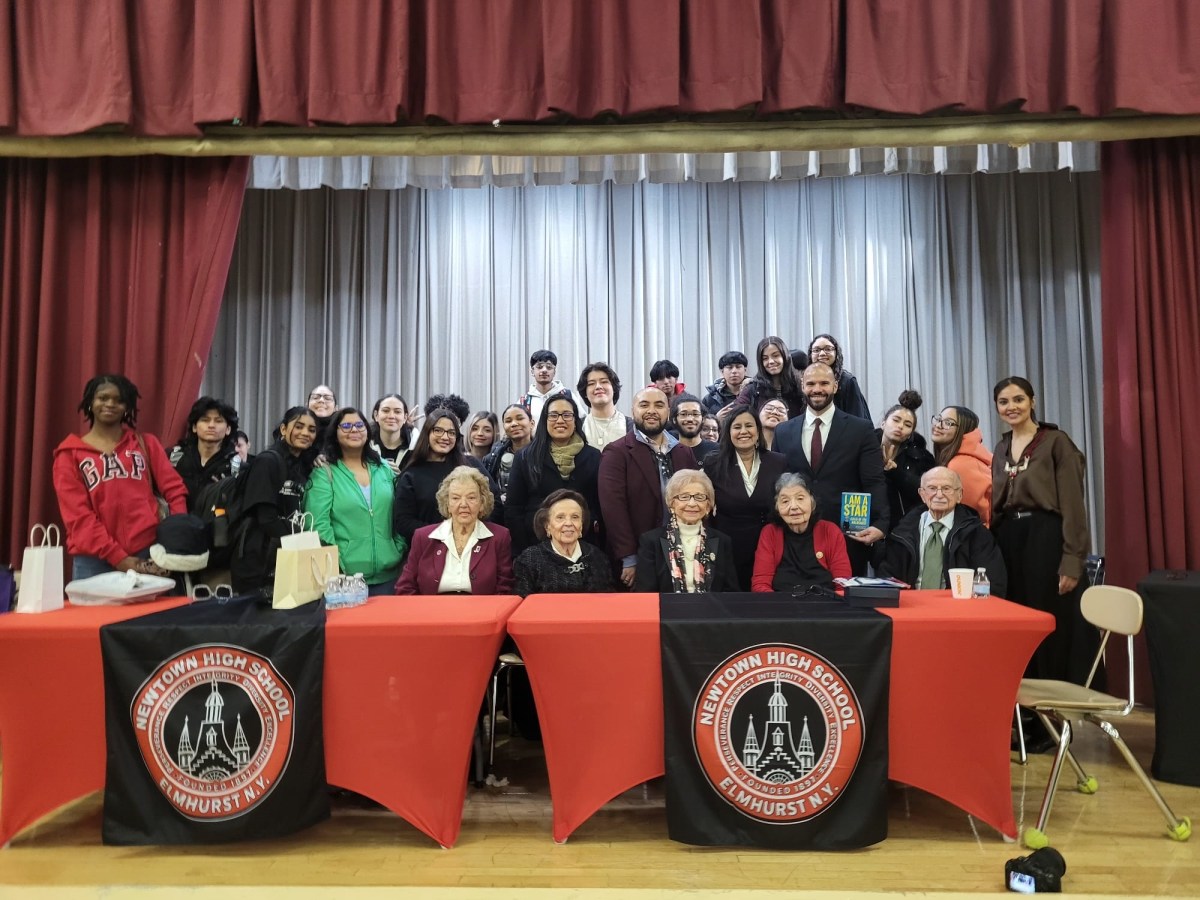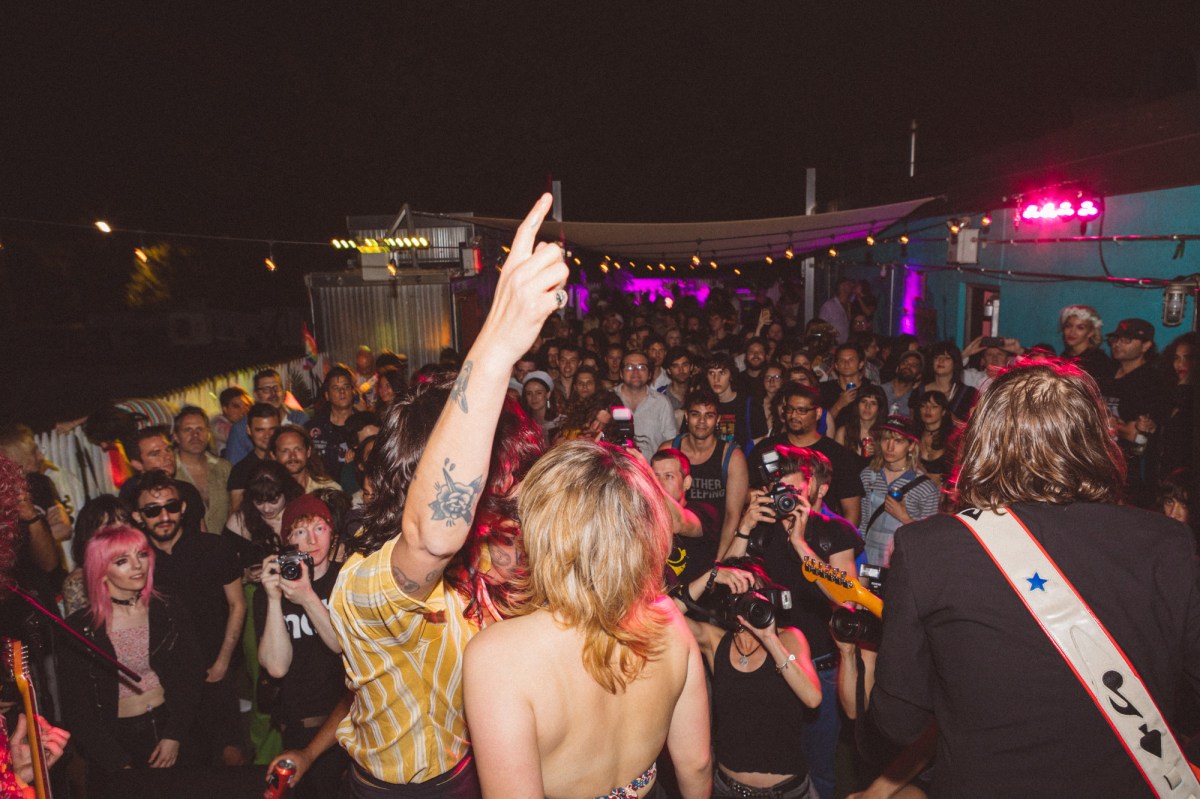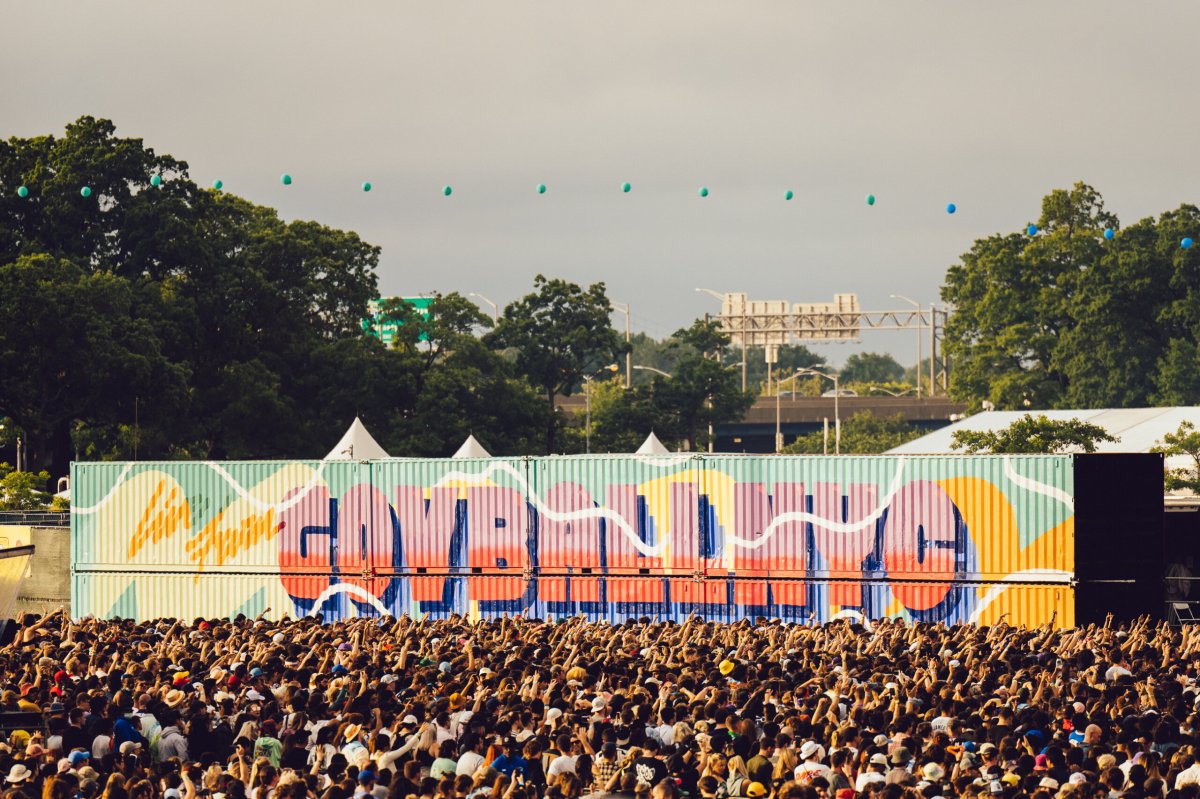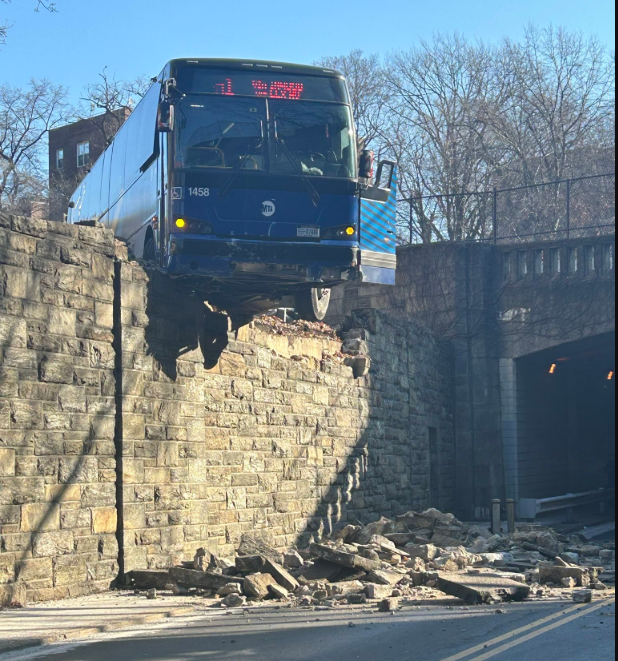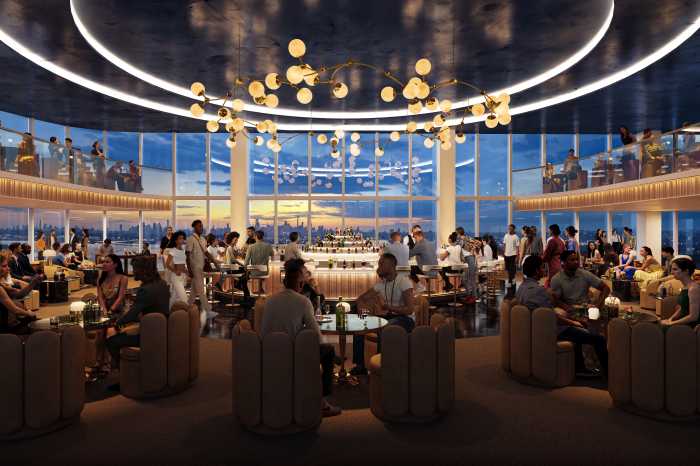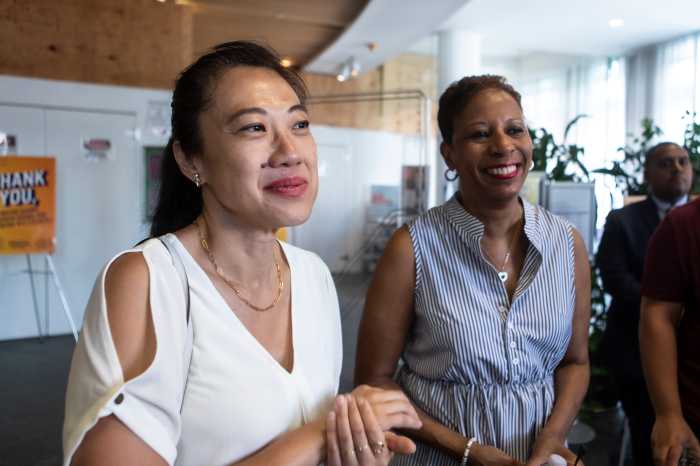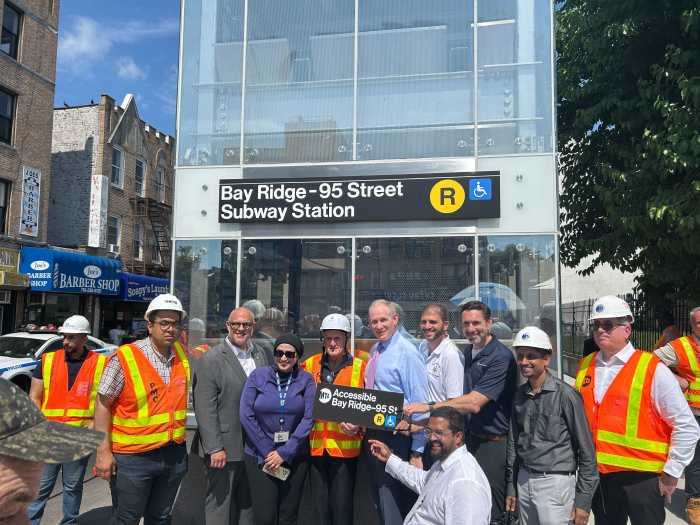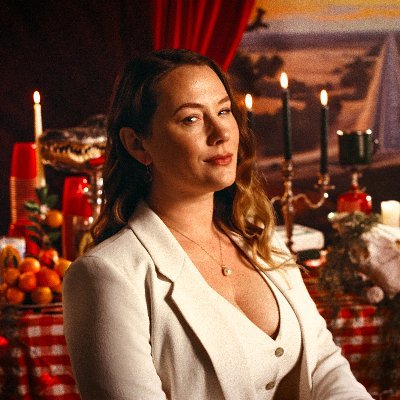-
 Elsa La Reina Del Chicharron
Elsa La Reina Del Chicharron4840 Broadway
This small counter service spot serves up a number of Dominican specialties, but the chicharrones are the star. Order a plate of the crispy pork ribs for $5 and indulge in the fatty goodness.
G’s Coffee Shop
634 W. 207th St.
Who knew a chocolate egg cream would pair well with a chorizo taco? In addition to classic deli sandwiches and wraps, the authentic Mexican favorites Candido Angel and his son Steven added to the menu at this coffee shop slash bodega have become a hit. Regulars swear by the chorizo breakfast burrito.
El Lina
500 W. 207th St.
This Dominican diner in the shadow of the elevated 1 train has been a neighborhood favorite for almost 30 years.
212-567-5031
” data-id=”111951207″ data-link=”https://amnewyork.wpengine.com/wp-content/uploads/2019/10/20570_image.jpg” class=”wp-image-1.11951207″/>Photo Credit: Jeff Bachner -
 La Marina
La Marina348 Dyckman St.
This popular waterfront nightclub features sweeping views of The Palisades and draws celebs like Jay Z and Beyonce with its bottle service and DJs.
Inwood Local
4957 Broadway
An impressive list of hard-to-find craft beers and a backyard beer garden makes this a favorite hangout for locals.
Liffy II Bar
5009 Broadway
A remnant of Inwood’s Irish past, this no-frills pub is a good place to grab a beer or inexpensive drink.
212-544-7255
” data-id=”111951206″ data-link=”https://amnewyork.wpengine.com/wp-content/uploads/2019/10/23266_image.jpg” class=”wp-image-1.11951206″/>Photo Credit: Jeff Bachner -
 Bizcocho de Colores
Bizcocho de Colores241 Sherman Ave.
The tres leches, a sponge cake soaked in evaporated milk, condensed milk and heavy cream, is why both locals and outsiders flock to this small family-run bakery.
Probes
4857 Broadway
A high-end men’s fashion boutique featuring brands like Diesel and G-Star.
Portes Q Cigars
5009 Broadway
Have your cigar rolled for you with tobacco imported from the Dominican Republic at this tiny storefront that feels like a clubhouse.
” data-id=”111951210″ data-link=”https://amnewyork.wpengine.com/wp-content/uploads/2019/10/20571_image.jpg” class=”wp-image-1.11951210″/>Photo Credit: Jeff Bachner -
 Inwood Greenmarket
Inwood GreenmarketIsham Street between Seaman Avenue and Cooper Street
A year-round farmer’s market held every Saturday that has become a community gathering place. A wide variety of apples and other fruits, wild-caught fish and artisanal breads and pastries are just some of the items available.
Muscota Marsh
Indian Road and West 218th Street
Opened in 2014 and developed by the same firm that designed the High Line, this one-acre park with wooden walkways, benches and gravel paths overlooks the only remaining salt marsh in Manhattan.
Swindler Cove at Sherman Creek Park
Between the Harlem River Drive and the Harlem River
Located on what was once an illegal dumping ground, this hidden gem contains a community garden and the Peter Jay Sharp Boathouse, where boating lessons are offered to the community.
Nyrp.org” data-id=”111951217″ data-link=”https://amnewyork.wpengine.com/wp-content/uploads/2019/10/20572_image.jpg” class=”wp-image-1.11951217″/>
Photo Credit: Jeff Bachner -
 Trains
TrainsA to Dyckman Street and Inwood-207th Street
1 to Dyckman Street, 207th Street, and 215th Street
Buses
M100, Bx7, Bx12, Bx20
” data-id=”111951218″ data-link=”https://amnewyork.wpengine.com/wp-content/uploads/2019/10/20573_image.jpg” class=”wp-image-1.11951218″/>Photo Credit: Jeff Bachner -
 Median sales price: $336,500
Median sales price: $336,500
Number of units on market: 151
Median rental price: $1,800
Number of rentals on market: 703
(Source: StreetEasy)
” data-id=”111951385″ data-link=”https://amnewyork.wpengine.com/wp-content/uploads/2019/10/201_image.png” class=”wp-image-1.11951385″/>
Photo Credit: Jeff Bachner -
 A proposal put forth in the spring of 2015 by the NYC Economic Development Corporation, City Councilman Ydanis Rodriguez and numerous city agencies aims to redevelop the section of Inwood along the Harlem River.
A proposal put forth in the spring of 2015 by the NYC Economic Development Corporation, City Councilman Ydanis Rodriguez and numerous city agencies aims to redevelop the section of Inwood along the Harlem River.The plan, called Inwood NYC, falls under Mayor Bill de Blasio’s Housing New York proposal to build or preserve 200,000 affordable housing units.
Inwood NYC aims to build affordable and market-rate housing, retail and recreational waterfront access in the 20-block stretch between Academy Street and East 220th Street between 10th Avenue and the river.
A spokesman from Rodriguez’s office could not be reached for comment as of press time, but the councilman published an editorial in the Manhattan Times in March in which he explained the benefits Inwood NYC would have on the community.
“As new mixed-use waterfront districts develop, community-oriented retail and recreational amenities must accompany new housing, alongside commercial opportunities that bring jobs and economic growth — all with convenient transit access,” Rodriguez wrote. “Investments in key streets, parks and public spaces can strengthen connections to the river, improve access to open space and transform Ninth and 10th avenues into safer, greener and more visually appealing corridors.”
The proposal’s specifics are still being developed, Austin Finan, a spokesman for de Blasio, told amNewYork.
“We are in the early stages, working closely with Council Member Ydanis Rodriguez and listening to the input of all stakeholders,” Finan said. “This is a rare opportunity to protect lots of affordable housing, build even more and bring good jobs to local Inwood residents.”
Rodriguez has been holding meetings with Inwood residents since June 2015. An open house for the public to explore the proposal is scheduled for this summer, but representatives from his office couldn’t confirm the exact date or time.
” data-id=”111951212″ data-link=”https://amnewyork.wpengine.com/wp-content/uploads/2019/10/20574_image.jpg” class=”wp-image-1.11951212″/>Photo Credit: Jeff Bachner
With its copious parkland, history and waterfront, Inwood offers residents a respite from the rest of the city.
Located on the northern tip of Manhattan, the neighborhood features a forest with glacial caves once used by Native Americans, at Inwood Hill Park on its western edge by the Hudson River.
A 20-minute walk east and you can buy fresh ceviche and clams out of the back of a van next to the Harlem River in the shadow of the elevated 1 train.
It’s this diversity of experience — along with classic pre-war apartments available at prices lower than most other parts of Manhattan — that is causing a rapidly-growing number of New Yorkers to migrate north to Inwood.
“People make a choice to come to Inwood because it feels [small],” said Shahabuddeen Ally, chair of Community Board 12. “But people are also attracted to it because of how different it can be block to block.”
Inwood’s physical landscape has remained mostly unchanged for decades due to zoning restrictions that limit buildings to seven stories. The high-rise glass boxes popping up throughout the city are nowhere to be found in the neighborhood.
“Your typical apartment in Inwood has got a lot of space, a decent level of renovation and is close to the trains no matter what street it’s on,” said Santiago Steele, 44, an associate broker with Citi Habitats who sells properties in the area. “There’s a very high demand because the prices are low.”
The median recorded sales in Inwood in 2015 was $336,500, compared to $976,000 for all of Manhattan, according to StreetEasy.
The median rent in 2015 was $1,800 in Inwood, and $3,200 in Manhattan as a whole, the listings site found.
The majority of the housing stock in Inwood west of Broadway features pre-war construction and art deco detail.
The six-story co-op building at 91 Payson Ave. is a great example of the pre-war style that’s common in northern Manhattan, according to Cole Thompson, a real estate agent with New Heights Realty, 13-year Inwood resident and author of the neighborhood blog myinwood.net.
“People do seem to be flocking up here,” said Thompson. “People are streaming up here from Brooklyn, but they have been for years really. Now there seems to be a second wave of Brooklynites that are worried about the L train going offline and are looking at Inwood.”
Inwood is served by the A train, at the Dyckman Street and 207th Street stations, and the 1 train at Dyckman Street, 207th Street and 215th Street stations. For some residents, the commute to places like Midtown, which can take 40 minutes or more, is an inconvenience.
“It does take a long time to get downtown,” said Mark Porter, 53, an editor with Reuters who has lived in Inwood since 2001.
But for history buffs, its remoteness might be worth it. A walk up Broadway is a trip through Manhattan’s past.
The Dyckman Farmhouse Museum on 204th Street is the oldest remaining farmhouse in Manhattan.
Reconstruction work was recently completed on the 215th Street Stairs, a set of 110 stairs built in 1915 connecting Broadway with Park Terrace East.
Another draw to Inwood is its abundance of parkland.
The 196-acre Inwood Hill Park features Manhattan’s only primeval forest and the island’s last remaining natural salt marsh, along with baseball diamonds, soccer fields, tennis courts and miles of footpaths.
“We’re a tiny neighborhood, and we have the best parks in the city,” said Jason Minter, owner of Indian Road Cafe at 600 W. 218th St. “The views are magnificent. It feels like you are in an entirely different place.”
Many of Inwood’s food, drink and shopping options are concentrated on Broadway and Dyckman Avenue. Popular spots include Mamajuana Cafe, a Latin restaurant at 247 Dyckman which opened in 2007, and The Park View, a coffee shop that opened at 219 Dyckman more than 20 years ago.
On Broadway are a number of old-school mom-and-pop businesses, including several Dominican eateries.
One of the more unique places to grab a bite is El Rey Del Ceviche, owned and operated for 49 years by Inwood resident Bobby Fish.
Fish, who runs the raw bar out of the back of a van in a gas station parking lot on West 207th Street, sells containers of ceviche for $7 and cherrystone clams for $1 a-piece. Patrons can slurp down the clams with a bit of hot sauce and a squeeze of lime at the folding table set up next to the van.
“I don’t do this for the money,” Fish said of his business. “I do it for the people. I love it here.”
Find it:
Inwood is surrounded on three sides by water — the Hudson River to the west and the Harlem River to the east and north. Its southern boundary is Dyckman Street to the east of Broadway and Riverside Drive to the west of it, according to StreetEasy.
